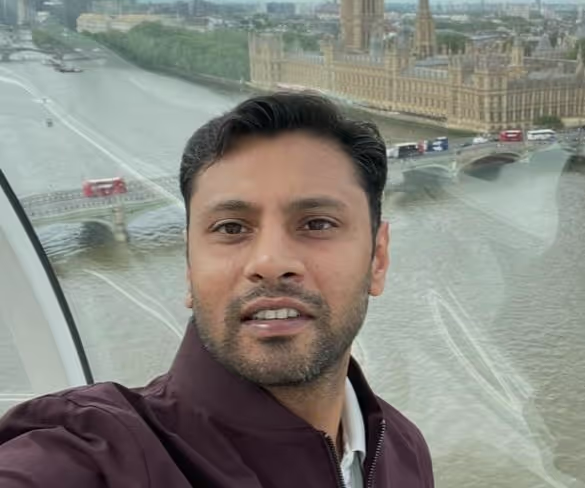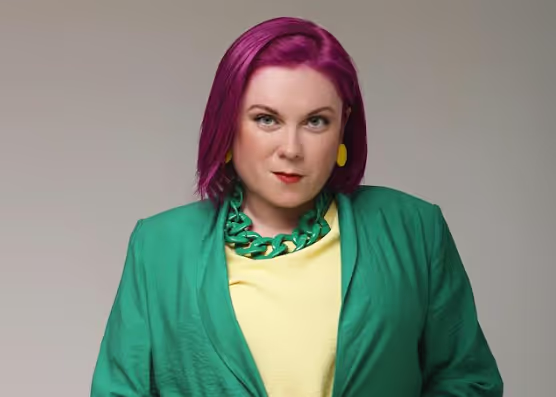
In Conversation with Eishan Gupta, Associate Director, Voice & SMS at Tata Communications
In this interview, Eishan shares his views on the transformation of messaging in India, from traditional SMS to RCS and AI-powered customer engagement. Discover key trends shaping the future of telecom and enterprise messaging.
Eishan’s journey through the telecom world spans over a decade, he’s watched messaging transform from the humble SMS to rich, AI-powered conversations that reach customers across continents and channels.
From simple SMS to rich, AI-powered conversations, he’s worked closely with businesses navigating the shift from transactional alerts to truly engaging, multi-channel customer journeys. As messaging has shifted toward RCS, CPaaS, and conversational commerce, he's been part of the evolution.
Curious to hear how he sees the future of messaging? Scroll down for the interview:
Eishan, with your rich experience in telecom and international exposure, how have you seen the SMS landscape evolve in India over the past decade? What major shifts have shaped this journey?
The SMS landscape in India has undergone a dramatic transformation over the past decade, shaped by technological, regulatory, and behavioral shifts.
From Person-to-Person (P2P) to Application-to-Person (A2P) Dominance
· Early 2010s: SMS was widely used for personal communication.
· Now: A2P SMS (used by businesses for OTPs, alerts, promotions) dominates. Personal messaging has largely shifted to platforms like WhatsApp, Telegram, and Signal.
Despite the rise of data-driven apps, SMS remains reliable and accessible in areas with poor connectivity. Government schemes and financial inclusion efforts still rely heavily on SMS.
With the explosion of digital services—banking, e-commerce, fintech, and government portals—SMS became the backbone for: One-Time Passwords (OTPs), Transaction alerts, Service updates
Brands shifted to rich media channels (WhatsApp Business, RCS, email, etc)
Communication Platforms as a Service (CPaaS) has become a game-changer in how businesses in India, and globally, manage customer communications. Key features being - Omnichannel messaging, Automated workflows, Analytics and personalization
SMS is now part of a larger customer engagement strategy. RCS is positioned as the next-gen SMS, offering: Rich media, Branding, Verified sender IDs. Adoption in India is still nascent, but growing, especially with Android's support.
Can you shed light on how product strategy in telecom has changed with the rise of OTT messaging platforms and what this means for traditional SMS services?
The rise of OTT messaging platforms like WhatsApp, Telegram, Signal, and others has significantly disrupted the traditional telecom product strategy, especially around SMS.
With P2P SMS declining, telcos doubled down on A2P SMS and CPaaS offerings:
· Enabling businesses to send OTPs, alerts, and transactional messages
· Offering APIs and dashboards for campaign management
RCS is telecom’s answer to OTT messaging:
· Offers rich media, branding, verified sender IDs
· Telcos are working with Google and OEMs to push RCS adoption
· Still early-stage in India, but promising for enterprise use cases
Telcos like Jio and Airtel have evolved into digital conglomerates, offering cloud, fintech, entertainment, and IoT services. SMS is now just one part of a broader digital engagement strategy.
With increasing spam and fraud, trust in messaging is becoming a big issue. What role does enterprise-grade messaging play in restoring consumer trust?
Trust in messaging has become a critical issue in India’s telecom and digital communication landscape, especially with the surge in spam, phishing, and fraud. Here is how Industry and Enterprises are responding to gain back trust of end users:
TRAI’s DLT Framework – Introduced to curb spam and fraud by enforcing:
· Template registration
· Sender ID verification
· Consent and preference management
Brands can send branded, verified messages with logos and checkmarks. RCS adds rich media and encryption, reducing spoofing risks.
Telcos and CPaaS providers are using machine learning to detect and block suspicious traffic in real time. Many brands are shifting to WhatsApp Business API, which offers:
· Verified business profiles
· End-to-end encryption
· Better user trust and engagement
Banks, telcos, and regulators are running awareness drives on:
· Not sharing OTPs
· Recognizing phishing attempts
· Reporting frauds
So, What’s Next?
· Trust Layering: Expect more verified sender frameworks across channels.
· Unified Consent Management: A single platform for users to manage communication preferences across brands.
· Stronger Penalties: For violators of spam and fraud regulations.
· Rise of Consent-Based Marketing: Moving from push to pull-based engagement.
What’s your view on the next phase of A2P messaging in India? Do you foresee a transition to richer messaging formats like RCS or conversational commerce becoming the norm?
RCS is rapidly transforming the messaging landscape in India, especially in the enterprise communication and customer engagement space.
India and China are projected to account for 30% of global RCS business messages by 2025. RCS interactions in India surged by 850% in 2024, driven by brands integrating it with SMS for seamless customer journeys. During major sales events like Black Friday and Cyber Monday, RCS interactions spiked by over 1400%, showcasing consumer enthusiasm. By 2029, India is projected to have 254 million A2P RCS users, generating $544 million in revenue. Google has partnered with Jio and Vodafone Idea (Vi) to enable RCS infrastructure.
Consumers expect interactive, media-rich experiences, which RCS delivers directly in the native SMS inbox.
Indian brands are embracing chat-based shopping, support, and engagement. RCS enables:
· Product carousels
· Embedded payment links
· Real-time tracking
· AI-powered chatbots
This is especially impactful in e-commerce, BFSI, travel, and quick commerce. RCS messages have shown:
· 4x higher engagement than SMS
· 98% delivery rates
· 35%+ read rates
Unlike WhatsApp, RCS is hosted by telcos and falls under TRAI’s regulatory framework. This makes it more suitable for sensitive use cases like banking and government messaging.
RCS is 30–40% cheaper than WhatsApp Business messaging for enterprises. This makes it attractive for large-scale campaigns and transactional messaging
What role do you see AI and analytics playing in the future of voice and SMS?
AI and analytics are playing an increasingly transformative role in SMS communication, especially in the enterprise and telecom sectors.
AI-Powered Spam & Fraud Detection – Machine learning models analyze message patterns, sender behavior, and content to detect: Phishing attempts, Spoofed sender IDs, Unregistered templates. Telcos and CPaaS platforms use AI to block or flag suspicious messages in real time, improving trust and compliance.
Predictive Analytics for Campaign Optimization – AI analyzes historical data to: Predict best times to send messages, Identify high-converting templates, Segment users based on behavior and preferences. This leads to higher engagement and lower churn
NLP is used to:
· Auto-generate message content based on campaign goals
· Understand user replies in two-way SMS (e.g., “Yes,” “No,” “More info”)
· Power chatbots over SMS for customer support and lead qualification
Real-Time Delivery & Engagement Analytics – Dashboards powered by AI show: Delivery rates, Open/read rates (via RCS or integrated platforms), Click-through and conversion metrics. Helps marketers adjust campaigns on the fly
AI enables hyper-personalized messaging by analyzing: Purchase history, Location, Device type, Engagement history
Smart Channel Routing – AI decides whether to send a message via: SMS, WhatsApp, RCS, Email. Based on user preferences, past behavior, and delivery success, ensuring maximum reach and cost efficiency
AI helps manage:
· Opt-in/opt-out preferences
· Consent logs
· Regulatory compliance (e.g., TRAI DLT in India)
· Reduces manual overhead and legal risk
Looking ahead, what excites you most about the future of messaging in India and across emerging markets?
The future of messaging in India and across emerging markets is being shaped by a powerful mix of technology, consumer behavior, and enterprise innovation. India, in particular, is not just adapting to global trends, it’s leading and influencing them.
Shift from SMS to Rich Messaging
· Traditional SMS is being replaced by RCS and OTT platforms like WhatsApp, offering:
· Verified sender IDs
· Rich media (images, buttons, carousels)
· Conversational flows
· By 2028, RCS and WhatsApp will capture 50% of India’s CPaaS market value
AI & GenAI Driving Personalization
Indian enterprises are investing in GenAI-powered chatbots, voice bots, and predictive analytics to:
· Automate customer support
· Personalize engagement
· Optimize campaign performance
Messaging is evolving into Conversational Experience as a Service (CXaaS)
Seamless integration of marketing, support, and transactions
Used heavily in e-commerce, fintech, and healthcare

Rapid Replies:
What’s one major messaging trend businesses can’t afford to ignore today?
Multi-channel messaging strategy
Describe India’s messaging landscape in one word, and why.
Convergent
SMS or Voice: Which one has more life?
SMS
Your thoughts on RCS: game-changer or overhyped?
Game Changer
One lesson from global markets that Indian telecom should embrace?
Platformization
The best piece of career advice you’ve received in telecom
Don’t sell connectivity…. Build experience!!!!
Thanks, Eishan, for sharing your thoughts and walking us through the changing world of messaging. It was great to hear your take on where things are headed and how businesses are adapting. I appreciate you taking the time to be part of this conversation.
Tata Communications at a Glance:
Tata Communications is a leading digital ecosystem enabler, supporting the transformation of global enterprises, including 300 of the Fortune 500. The company carries 30% of the world’s internet routes and connects to 60% of global cloud providers. With over 25 years of presence in India’s digital landscape, Tata Communications continues to deliver secure, connected experiences that drive the New World of Communications™.




